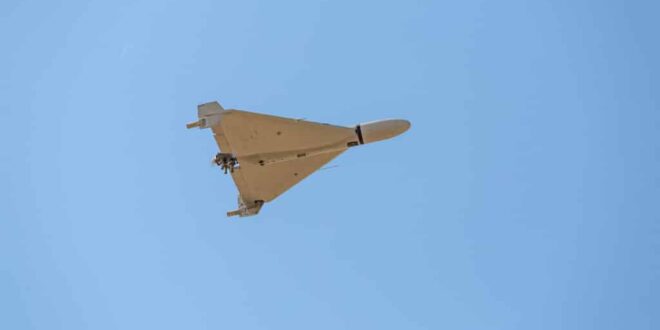Iran’s drone threat is now one of its main military threats to the region, one that has surpassed its missile and other threats in many ways.
Iran’s drone threat has been increasing in recent years. Reports on the evening of April 13 that Iran had launched drones targeting Israel are the latest example of how the Iranian drone threat is expanding across the Middle East and also threatening the world.
It is a threat to the world because Iran has exported Shahed 136 drones to Russia to be used against Ukraine and it has also exported drones to Venezuela and other countries.
Iran has been investing in drones since the 1980s. It invested in drones, or what are also known as unmanned aerial vehicles or remote-piloted aircraft, because Iran’s air force suffered losses due to the Iranian Islamic Revolution of 1979 and also due to the Iran-Iraq war.
Using cheap unmanned aircraft made sense for Iran during the war with Iraq because Iraq had better air defense systems and also had aircraft acquired from the Soviets. By contrast, the Iranians were flying aircraft the shah’s regime had acquired from the United States, but these aircraft didn’t always have replacement parts or enough trained pilots. Cheap drones can be used for missions that are considered dull, dirty, and dangerous.
Iran’s drone program consisted of simple drones in the beginning. These drones also came in several “families” built by various state-linked companies. They include the Shahed family of drones and the Ababil. Iran modeled these drones on the types of drones it saw other countries using, such as the US Predator, or the Israeli Hermes, and also other types of Israeli drones.
Over time Iran realized that its drones, mostly used for surveillance, were no longer a weapon that allowed Iran to project the kind of power it wanted.
Use of Iranian drones by Houthis
What Iran’s Islamic Revolutionary Guard Corps wanted was an instant air force. In the last decade, Iran has increased its drone program exponentially. It began to invest in simple kamikaze drones, and this eventually led to the creation of the Shahed 136.
The Shahed 136 is relatively simple in design, around 3.5 meters in length and 2.5 meters in width, with up to a 40 kg. warhead. It has a delta-wing design, which may make it harder to detect from some radars. However, in general, what makes it successful is that it is easy to make and Iran has found success exporting them.
Iran moved Shahed 136-type drones to Yemen in late 2020 to be used by the Iran-backed Houthis. The Houthis had already been using numerous types of drones, often with Iranian designs and advice.
In addition, Iran had already found success in exporting its drones and blueprints for them to Hezbollah in Lebanon and also sending drones to Iraq and Syria.
For instance, in February 2018, Iran launched a drone targeting Israel from Syria’s T-4 base near Palmyra. Iran also used drones to attack Saudi Arabia’s Abqaiq facility in 2019.
Iran’s drones are now a major threat, not only to the Middle East but also to Europe because Russia possesses Iranian drones. In addition, Iran has used drones to attack the Kurdistan region of Iraq and to target US forces in Iraq and Syria.
According to The Washington Post, an Iranian drone struck a “CIA hangar” at Erbil International Airport, part of a US facility at the airport in the Kurdistan region. As such, the Iranian drone program has become a growing threat and one that is rapidly increasing.
The fact that Iran has decided to use drones to target Israel illustrates that Iran feels this is now the go-to tool of attack. Iran has essentially put these drone programs on steroids in the last several years. It has used drones also to attack commercial ships and its proxies such as the Houthis in Yemen, have targeted Eilat using drones.
Hezbollah is also believed to possess thousands of drones. Iranian-backed militias in Iraq and Syria have targeted Israel with drones over the last several months. Iran’s drone threat is now one of its main military threats to the region, one that has surpassed its missile and other threats in many ways.
 Eurasia Press & News
Eurasia Press & News


